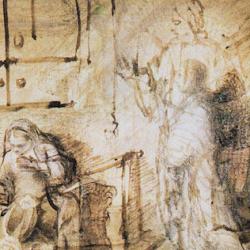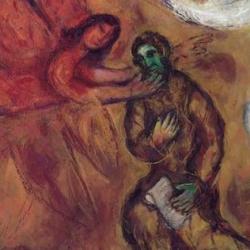In a 1988 article in JSOT , Edgar Conrad points to the two royal narratives of Isaiah (chs. 7, 36-39) as the structural keys to the book. Drawing on his earlier study of “fear not” passages, he summarizes his thesis thus: “The close relationship between these two narratives extends to the larger contexts in which they occur, for each royal narrative is followed by a ‘Fear not’ oracle addressed to the community: the Ahaz narrative (Isa. 7) is followed by the community War Oracle of 10.24-27, and the Hezekiah narrative (Isa. 36-39) is followed by the community War Oracles in 41.8-13; 41.14-16; 43.1-4; 43.5-6; 44.1-5. Furthermore, when these two narratives are read in light of one another, a certain movement or progression can be detected in the book; the Hezekiah narrative is not simply a structural clone of the Ahaz narrative. The community War Oracle in 10.24-27 helps explain the movement or development between the Ahaz and Hezekiah narratives, just as the community War Oracles in 41.8-13; 41.14-16; 43.1-4; 43.5-6; 44.1-5 help explain the development beyond the Hezekiah narrative.
In more detail:
The two narratives share a number of structural and thematic similarities: Both begin with the threat of an invading army (the Israel/Aram alliance in ch 7, Assyrian in ch 26); in both cases the setting is Jerusalem; each narrative describes the distress of the king when he hears the news (7:2; 37:1); in both cases, Isaiah delivers as “War Oracle” encouraging the kings to “fear not”; each king is offered a sign; though the city is spared both times, both narratives end ominously, with a threat of a greater enemy to come (Assyria is on the horizon for Ahaz, Babylon for Hezekiah).
In the midst of these similarities, there are dramatic contrasts, the most important of which are the contrasts between the kings of Judah and the Gentile kings involved. Ahaz is a thin character in literary terms, and faithless; Hezekiah is rounder, and faithful. Neither of the kings of Israel and Aram get much attention, but Sennacherib is named, and the message of his servant is recounted in detail. Thus, the two narratives are not only parallel, but suggest the progression of the narrative of Isaiah.
The first narrative (chs. 7-8) is followed by a promise of deliverance from Assyria, one that includes a War Oracle addressed to the entire nation (10:20-27). That promise is actually fulfilled in the course of the book: Isaiah 10 refers to the failed Assyrian advance on Jerusalem that is reported in the central chapters of the book. As Conrad sees it, the “king of Assyria” of 7:17 and 10:12 is not a generic king, but specifically Sennacherib. The unnamed king of the early chapters does just what Sennacherib does later: the speech of the Rabshakeh, for instance, is anticipated in Isaiah’s predictions of the arrogance of the king of Assyria (10:8-13).
If the “king of Assyria” predicted in the aftermath of the first royal narrative is Sennacherib, then it stands to reason that the king prophesied in the early chapters of Isaiah is Hezekiah. Conrad argues that Hezekiah is “God with us”: In contrast to Ahaz, Hezekiah asks for a sign; in contrast to Ahaz, Hezekiah receives the Lord’s prophet; finally, while Ahaz lacks faith and so is not established (Isaiah 7:9, with a pun on the word aman ), Hezekiah is faithful (38:3).
Because the oracles concerning Assyria are fulfilled, Israel as a whole has hope that they will also be delivered from future enemies, particularly Babylon. As Conrad puts it, “the War Oracle to the people promising deliverance from the Assyrians (10.24-27) gives hope following the announcement of Assyrian devastation at the end of the Ahaz narrative in the same way that the War Oracles addressed to the people (in chs. 41,43,44) give hope following the announcement of Babylonian devastation at the end of the Hezekiah narrative.”














